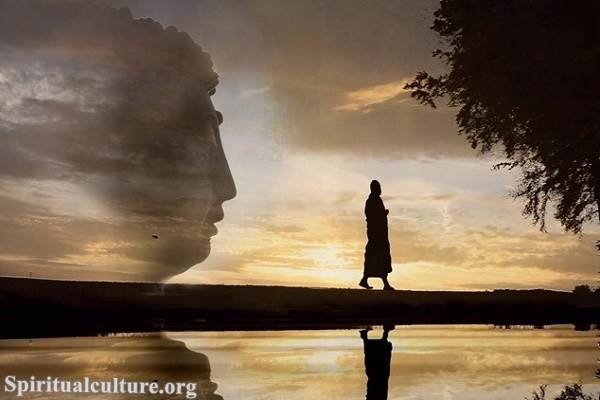Moses is one of the most significant figures in the Bible, known as the leader who freed the Israelites from slavery in Egypt and received the Ten Commandments from God. Among the many aspects of his life, his marital relationships have prompted considerable interest and debate.
In this article, Spiritual Culture will explore the identity of Moses’ wife, primarily focusing on Zipporah, her role in Moses’ life, and the implications of his marriages.
Identity of Moses’ Wife
Background of Zipporah
Zipporah is the most recognized wife of Moses, a pivotal figure in the Exodus narrative. According to Exodus 2:16-21, Moses encountered Zipporah while fleeing Egypt. He arrived in Midian, where he came upon a group of women, daughters of the priest of Midian. When some local shepherds tried to intimidate them at a well, Moses stepped in to help them. Impressed by his bravery, Zipporah’s father Jethro invited Moses to stay with them, eventually leading to their marriage.
Zipporah was a Midianite, a descendant of Abraham through Keturah, and positioned her as an outsider in the Israelite community. This background may influence her views and actions throughout her life with Moses.
Relationship Between Moses and Zipporah
The relationship between Moses and Zipporah reflects both partnership and tension. While Zipporah supported Moses during his mission, her background often created friction between her Midianite heritage and the expectations of the Israelite community.
The narrative suggests that their marriage was marked by mutual respect but also challenges, highlighted by Zipporah’s pivotal moment during the circumcision of their son (Exodus 4:24-26). Here, Zipporah intervened to save Moses’ life by performing the circumcision herself, indicating her strength and decisiveness in a critical moment. This act underscores her integral role in Moses’ story and her deep commitment to their family and faith.
Significance of Zipporah in Moses’ Life
Zipporah’s influence in Moses’ life is profound. As a wife, she represents the merging of two cultures: the Egyptian and the Midianite. Her unique background may have provided Moses with different perspectives in his leadership and spiritual journey.
Moreover, Zipporah’s actions, especially her boldness during the circumcision incident, reflect the courage and faith present in women of that era. In many ways, she is an unsung hero, playing a crucial role in God’s plan for the Israelites, standing by her husband during the trials they faced.
Did Moses Have More Than One Wife?
Biblical References to Multiple Wives
The question of whether Moses had more than one wife has roots in various biblical texts. While Zipporah is the most documented, there are other references in scripture that suggest there could have been more women in Moses’ life.
In addition to Zipporah, Numbers 12:1 mentions a “Cushite woman” which has led to debate among scholars regarding Moses’ marital history. The term “Cushite” generally refers to people from the region of Cush, likely located in present-day Sudan or Ethiopia.
Interpretations of Numbers 12:1
Numbers 12:1 states, “Miriam and Aaron spoke against Moses because of the Cushite woman whom he had married, for he had married a Cushite woman.” The interpretation of this scripture is contentious.
Some scholars maintain that the “Cushite woman” refers to Zipporah herself, highlighting the complexities of her identity as a Midianite and the implications of marrying outside of the Israelite tradition. Others argue that this is a reference to a second wife, perhaps one Moses took after Zipporah, though the text itself does not provide evidence of a second marriage.
Historical Context of Moses’ Marriages
Understanding the cultural context of Moses’ time is crucial to interpreting these biblical references. Polygamy was common in ancient Near Eastern societies, including among the Israelites. Prominent figures from the Bible such as Abraham, Jacob, and David took multiple wives. Therefore, it’s conceivable within this historical frame for Moses to have had more than one wife, but the text does not clearly delineate the nature of his marital relationships aside from Zipporah and possibly the Cushite woman.
The Role of Zipporah
Zipporah’s Actions During God’s Call
Zipporah played an essential role in Moses’ life during critical moments, particularly when he was called by God at the burning bush (Exodus 3). Although the narrative focuses on Moses, Zipporah’s presence in his life cannot be understated.
Her actions during the circumcision of their son—when she performed the ritual to save Moses from God’s wrath—illustrate her proactive involvement in their family’s faith practices, suggesting that she was not merely a passive figure but rather an active participant in the covenant between God and the Israelites.
Zipporah’s Family Background
Being a daughter of Jethro, the priest of Midian, Zipporah’s background highlights her connection to a significant priestly family. This lineage may have influenced her spiritual views and understanding of God. It also indicates that Moses may have benefited from her family’s teachings and practices, enriching his own spiritual journey.
Zipporah’s Influence on Moses
The influence of Zipporah on Moses is multifaceted. As a Midianite, her perspective could challenge or complement Moses’ Israelite worldview. This cross-cultural marriage may have provided Moses with unique insights, especially as he navigated the leadership of a diverse community.
Zipporah’s decisive action during the circumcision incident showcases her loyalty and courage, qualities that would have been vital in raising their children in a tumultuous environment during their desert wanderings.
The Cushite Woman Mentioned in Numbers
Speculations about the Cushite Woman
The mention of the “Cushite woman” has sparked much speculation regarding who she was and her significance in Moses’ life. Some theories suggest she was another wife, while others propose she may have been a reference to Zipporah, emphasizing her foreign heritage.
Debates continue over the identity of this woman, with many indicating that if she was indeed a separate entity, her presence would have implied further complexities within Moses’ marital relationships and community dynamics.
Differences Between Zipporah and the Cushite
Should the Cushite woman be seen as a separate wife, significant differences would arise between her and Zipporah. Zipporah represents a Midianite lineage and ties to Moses’ mission among the Israelites, while the Cushite woman may symbolize additional cultural influences and potential tensions relating to Moses’ leadership and the Israelites’ feelings towards outsiders.
Reactions of Miriam and Aaron
The reactions of Miriam and Aaron to Moses’ marriage to the Cushite woman reveal deep-seated biases about intermarriage and cultural boundaries. Their criticisms can be seen as reflective of broader societal sentiments about purity and identity among the Israelites. This incident not only highlights family dynamics but also encapsulates the struggles of blending cultures within a covenant community.
Conclusion on Moses’ Marriages
Summary of Key Points
In summary, Moses’ marital history, primarily involving Zipporah and potentially a Cushite woman, illustrates a complex interplay of culture, faith, and leadership. Zipporah stands out as a strong and capable partner who contributed significantly to Moses’ life and mission. The nuances regarding the Cushite woman bring forth conversations about cultural acceptance and the nature of leadership within the Israelite community.
Implications for Understanding Biblical Marriages
Moses’ marriages reflect broader themes in the Bible concerning familial relationships, cultural integration, and the challenges of leadership. They evoke discussions on how relationships can shape, support, or complicate one’s spiritual journey and societal responsibilities.
Through examining the life of Moses and his marital relationships, we gain insight into how love, commitment, and cultural heritage intertwine within the narrative of biblical figures, offering profound lessons on the complexities inherent in marriages that transcend cultural boundaries.
In exploring “Who Was Moses’ Wife?”, we not only delve into historical narratives but also glean wisdom on the enduring themes of faithfulness, resilience, and the ongoing journey of understanding love amid diversity and cultural integration.



